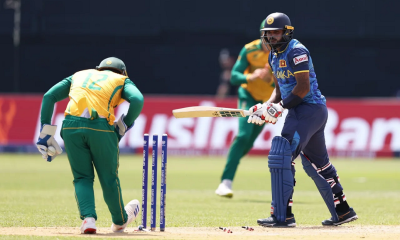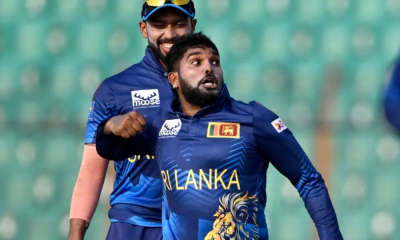Latest News
Chinese ship, Xiang Yang Hong 3’s port call flares India tension
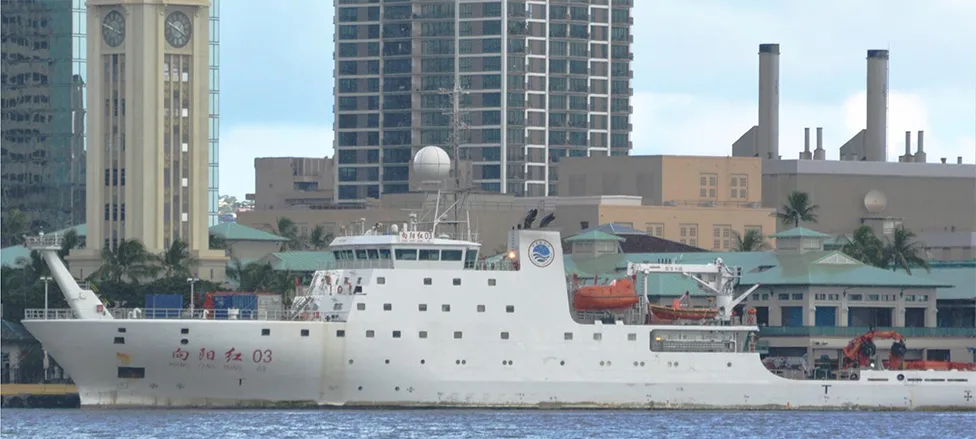
The expected arrival of a Chinese research ship in the Maldives this week has escalated tensions between Beijing, Delhi and Male.
Officially, the vessel Xiang Yang Hong 3 is there to “make a port call, for rotation of personnel and replenishment”. In short, an entirely innocuous stop.
But that is not how it is being seen in Delhi. Instead, the ship’s presence is at the very least a diplomatic snub. At worst, some fear, it could be a mission to collect data which could – at a later date – be used by the Chinese military in submarine operations.
China experts, however, have shrugged off their concerns. “The Chinese ships carry out scientific research work in the Indian ocean. Its activities on the high sea are entirely legitimate,” Zhou Bo, a former People’s Liberation Army Senior Colonel, told the BBC. “Sometimes the ships need replenishment – like fuel, food and water. So, they berth in a third country port, which is normal. So, the Indian government shouldn’t make any fuss about it. Indian Ocean is not India’s Ocean,” asserted Mr Zhou, who is now with the Tsinghua university in Beijing.
But this is not the first time that China – which competes for for influence with Delhi in the Indian Ocean amid a long-standing dispute over their Himalayan border – has sent one of its ships sailing close to Indian waters.
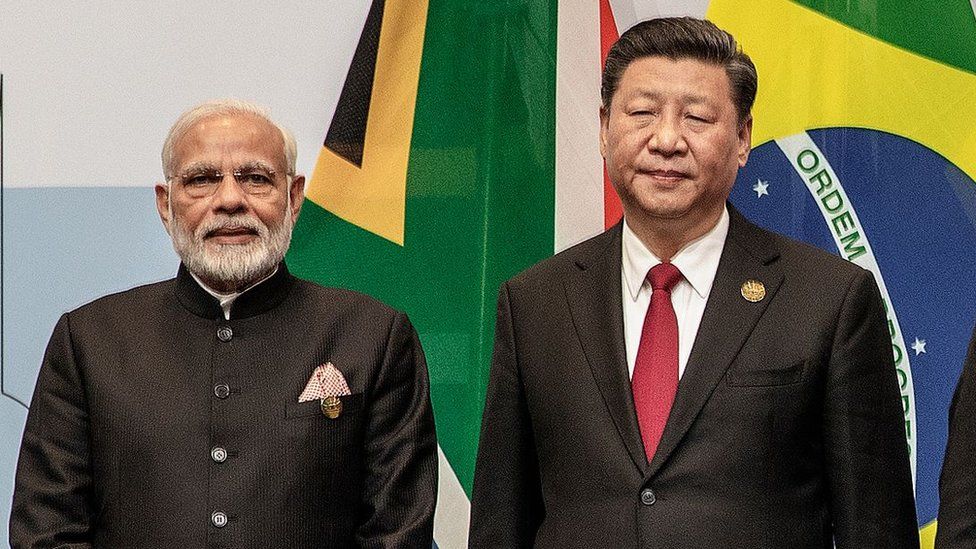
Two Chinese naval submarines made a port call to Colombo in 2014 and two Chinese research vessels visited Sri Lanka, close to the tip of southern India, in the past two years, much to the displeasure of India. The arrivals came as China, which has loaned billions of dollars to Colombo, made significant inroads into Sri Lanka.
The research ship, Xiang Yang Hong 3, had in fact originally planned to visit Colombo for replenishment before proceeding to the Maldives. But that has been shelved for now, according to Tharaka Balasuriya, the junior foreign minister of Sri Lanka.
“During this one year we want to develop our technology and expertise so that we can join in these research activities on an equal basis,” he told the BBC.
However, Colombo’s decision to stop the research vessels is being seen as a response to India’s strong objections to such visits by Chinese vessels.
India’s objections however, have made little difference in the Maldives.
The Maldives, which consists of about 1,200 coral islands and atolls in the middle of the Indian Ocean, has long been under India’s sphere of influence. But Mohamed Muizzu, who took over as president in November and is regarded as pro-China, wants to change that.
He campaigned on an ‘India Out’ platform, asking Delhi to withdraw about 80 Indian military personnel based on the island. India says the troops are in the island nation to maintain and operate three reconnaissance and rescue aircraft, donated by Delhi years ago.
The Maldivian government has set an ultimatum to Delhi to withdraw its troops by 15 March, two days before the country’s parliamentary polls. Following talks in Delhi last week, the Maldivian foreign ministry said India had agreed “to replace the military personnel” and that the first batch will leave by 10 March and the rest by the second week of May.
Following talks in Delhi last week, the Maldivian foreign ministry said India had agreed “to replace the military personnel” and that the first batch will leave by 10 March and the rest by the second week of May.


In December, Mr Muizzu’s administration also announced that it would not renew a hydrographic survey agreement with India that was signed by the previous government to map the seabed in the Maldivian territorial waters.
Relations have in fact deteriorated so much that none of the senior leaders of the Maldivian government attended a recent event organised by the Indian High Commission in Male to mark India’s 75th Republic Day.
China, meanwhile, rolled out the red carpet to Mr Muizzu when he went on a five-day state visit to Beijing last month. Since that trip, high-level Chinese officials have visited the Maldives. Mr Muizzu has also announced several Chinese-funded infrastructure projects.
The sudden shift in Male’s position towards China has raised concerns in Delhi, which attaches strategic significance to the island nation.
China, with its rapidly expanding naval forces, would likely also want access to such a strategically important location – something India wants to prevent.
“Of course, the Maldives is very important; it is the southern Oceanic flank of India,” Shyam Saran, a former Indian foreign secretary, told the BBC. “Just like we had serious reservations about what was happening in Sri Lanka, we will have serious reservations about that may happen in the Maldives,” Mr Saran said.
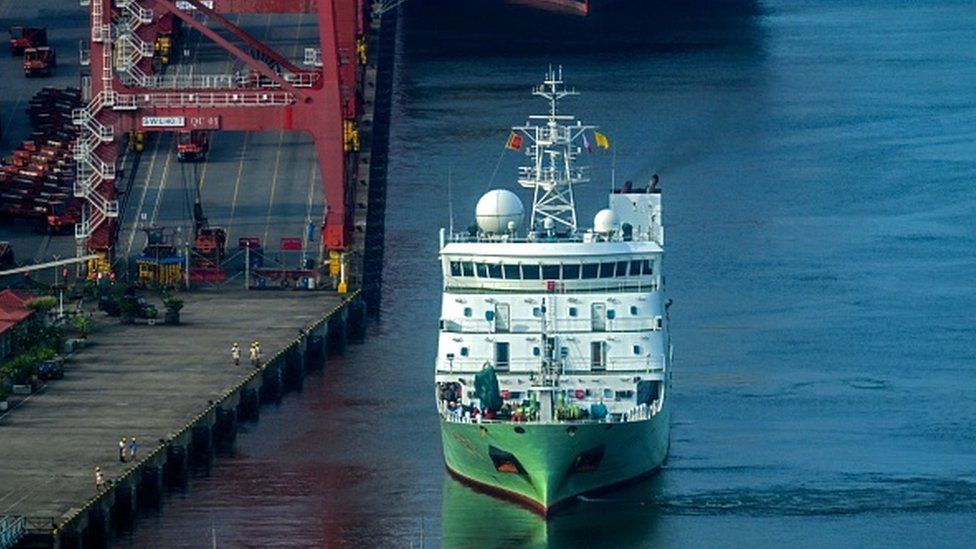
But it is not just Delhi worried about the relationship with Male.
The opposition Maldivian Democratic Party (MDP) and others have been urging Mr Muizzu’s government for a course correction, saying it’s not in the country’s interests to antagonise a giant neighbour like India. Last week the MDP said it was even contemplating moving impeachment proceedings against Mr Muizzu.
As a small island nation, the Maldives depends on India for most of its food, infrastructure building, and technological advancement. Many Maldivians go to India for medical treatment.
“Most people here think that government has taken the hostility against India a bit too far and that it is totally unnecessary,” Aik Ahmed Easa, a lawyer in Male affiliated with the opposition MDP, told the BBC. “The Maldives is a small country. But this is going into a dangerous phase where we are getting into the middle of the Asian superpower rivalry,” he said.
The Maldivian President’s office and the foreign minister did not respond to requests for comment.
China has greater strategic ambitions and it’s likely to send more ships to the Indian Ocean region for oceanographic research or to protect its commercial interests, experts say. For India, the challenge will be how to counter Beijing’s growing assertive influence in an area that Delhi perceives as its backyard.
Mr Zhou says Chinese aircraft carriers and their support vessels will eventually reach the Indian Ocean. If India disrupts restocking supplies for these ships in a third country – like Sri Lanka – then Beijing will be “furious”, he says.
(BBC)
Latest News
‘Bloody policies’: MSF recovers 11 bodies from Mediterranean off Libya
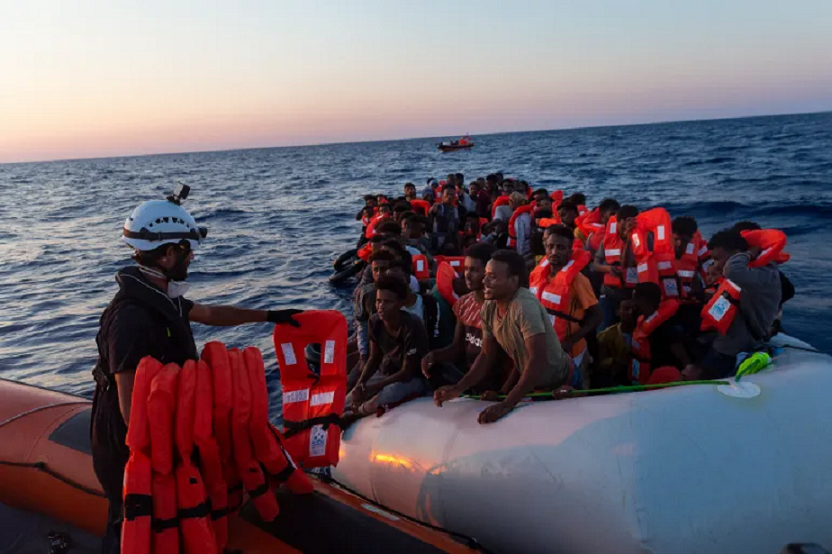
The aid group Doctors Without Borders has reported recovering 11 bodies and rescuing dozens of people off the coast of Libya as it criticised the migration policies of the North African country and European countries.
In a statement on Friday, the group, known by its French initials MSF, said its Geo Barents rescue vessel managed to recover the bodies following a search operation lasting more than nine hours after being alerted by German nongovernmental organisation Sea-Watch, which also rescues refugees and migrants.
“As we cannot determine the reason behind this tragedy, we know that people will continue to take dangerous routes in a desperate attempt to reach safety, and Europe must find safe and legal pathways for them,” MSF said in a post on X. “This catastrophe must end!”
Sea-Watch said it is unclear whether the bodies were victims of a previously unknown shipwreck, adding that they tried to contact Libya’s coastguard to go and retrieve the dead, but received no reply.
“The so-called Libyan coastguard – financed by the EU – ignored our call demanding that the bodies be recovered,” the group said.
Thousands of people trying to head from Africa to Europe use Libya as a departing point, with the Italian island of Lampedusa the nearest European destination as they undertake the dangerous journey across the Mediterranean to escape war, poverty and persecution.
Italy, which wants to put a stop to the migration stream, has said Libya and neighbouring Tunisia must do more to stop people from going to sea. It has also clamped down on the operation of the rescue ships, arguing that they encourage people to head to Europe, a charge that is denied by the charities.
Emphasising its policy on the rescue ships, Italy said on Friday that it forced the MSF rescue vessel to take the 165 people that it had saved from boats in the Mediterranean operation to the northern port of Genoa. The port was more than 650 nautical miles (1,200km) from their position and much farther than the more convenient ports in nearby Sicily, significantly delaying assistance to the rescued.
The route in the central Mediterranean is the most dangerous migrant crossing in the world, with the United Nations registering more than 20,000 deaths and disappearances in the area since 2014.
More than 3,000 refugees and migrants went missing in 2023 while attempting to use the route, according to the International Organization for Migration.
According to Italy’s interior ministry, the number of arrivals in the country has dropped in 2024 to fewer than 21,800 people since the beginning of the year, compared with close to 53,300 in the same period last year.
[Aljazeera]
Latest News
Mustafizur, Rishad, Hridoy dazzle in Bangladesh’s tight two-wicket win over Sri Lanka

Nuwan Thushara’s last over brought Sri Lanka screaming back into the match,as he first bowled Rishad Hossain, and then nailed Taskin Ahmed in front of the stumps with a pinpoint swinging yorker. This left Bangladesh eight wickets down, with 12 runs still to get.
However, the experienced Mahmudullah was at the crease for Bangladesh, and despite some further nervy moments, pushed Bangladesh across the line off the last ball of the 19th over.
But this was a match chiefly decided by Bangladesh’s own outstanding bowling. Mustafizur Rahman was the best among them, using shorter lengths and his cutters efficiently, to claim figures of 3 for 17. Rishad Hossain’s three-for through the middle overs also kept Sri Lanka quiet.
Mustafizur was instrumental in Sri Lanka’s downward spiral through the middle overs, which culminated in a crash-and-burn end. Ultimately, their inability to find boundaries, or even rotate strike against good Bangladesh bowling resulted in their downfall. A score of 125 for 9 always seemed poor on a decent pitch, even if their bowlers made a match of it in the end.
Brief scores:
Bangladesh 125 for 8 in 19 overs (Towhid Hridoy 40, Litton Das 36; Dhanajaya de Silva 1-11, Nuwan Thushara 4-18, Wanidu Hasaranga 2-32, Matheesha Pathirana 1-27) beat Sri Lanka124 for 9 in 20 overs (Pathum Nissanka 47, Dhananjaya de Silva 21; Tanzim Hasan Sakib 1-24, Taskin Ahmed 2-25, Mustafizur Rahman 3-17, Rishad Hossain 3-22) by two wickets
[Cricinfo]
Latest News
Rashid, Farooqi and Gurbaz the stars as Afghanistan crush New Zealand
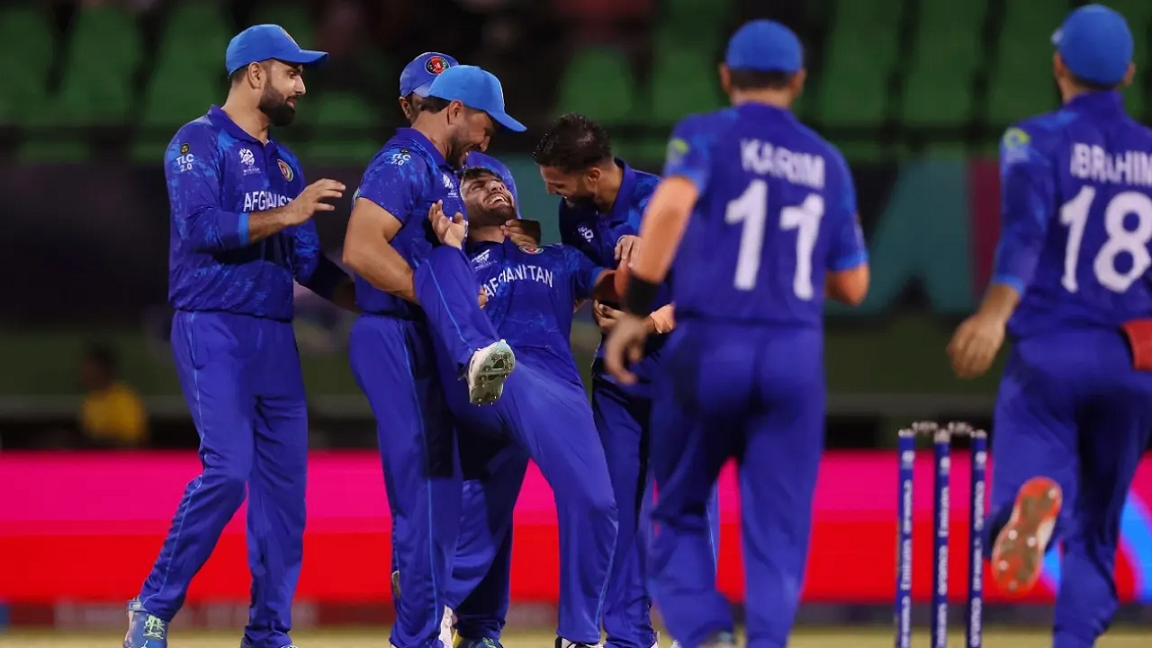
Afghanistan boosted their Super Eight chances with yet another dominating win, this time thumping New Zealand by 84 runs in Providence. Having beaten Uganda by 125 runs in their opening match, they are now at the top of Group C with a net run rate of 5.225.
After being sent in, Rahmanullah Gurbaz and Ibrahim Zadran gave Afghanistan a start of 103 in 14.3 overs. It came off the back of the 154 the pair added against Uganda, thus making them the first opening pair to register two successive century stands in the history of the T20 World Cup.
Afghanistan’s was an innings of two halves. They scored 55 for no loss in the first ten overs and 104 for 6 in the last ten, with Gurbaz contributing 80 off 56 balls. New Zealand, who had decided not to play any warm-up games, looked every bit rusty as their fielders dropped catches and missed run-out opportunities.
With the pitch assisting both seamers and spinners, chasing 160 was not going to be easy. But few would have expected New Zealand to collapse in the manner they did.
Fazalhaq Farooqi picked up three wickets in the powerplay and Rashid Khan three just after it. Eventually, both ended with identical figures of 4 for 17 as New Zealand were bowled out for 75 in the 15.2 overs. Glenn Phillips and Matt Henry were the only New Zealand batters to reach the double digits.
Trent Boult found some swing in the opening over but Gurbaz and Ibrahim showed their intent by picking up three fours off Henry from the other end. Both batters had luck on their side, too. Gurbaz got a second life when he skipped down the track to Santner and missed the ball, which went on to brush the leg stump but the bails did not budge. In the following over, Finn Allen dropped Ibrahim off Henry at the deep-square-leg boundary.
That was not all. Gurbaz got another reprieve after being involved in a miscommunication with Ibrahim. Having taken off for a single, Gurbaz had to retrace his steps and would have been run out had Conway not fumbled the throw.
Two balls later, New Zealand finally seemed to have found success when Santner pinged Ibrahim’s pads and umpire Kumar Dharmasena ruled it lbw. But the batter got the decision overturned on review as the ball was heading down the leg side. Immediately after that, Ibrahim hit Santner for an inside-out four as Afghanistan ended the powerplay on 44 for no loss.
New Zealand went against the prevailing wisdom of not bowling an offspinner when two right-hand batters at the crease, and Michael Bracewell repaid that faith by conceding only six off his first two overs.
Lockie Ferguson was even more frugal, going for five in his first two. He could have had Ibrahim off a slower full toss but a leaping Kane Williamson failed to pull off a one-handed stunner at mid-off. That meant while Afghanistan remained unscathed, they had only 55 on the board after ten overs.
Afghanistan had not hit a single six in the first ten overs, but there were five in the next three, including three in one Bracewell over as Gurbaz and Bracewell stepped on the accelerator. The pair took the side past 100 in the 14th over. New Zealand finally broke through when Ibrahim bottom-edged a short ball from Henry onto his stumps, after having been hit on the grille on the previous delivery.
Promoted to No. 3, Azmatullah Omarzai played his part with 22 off 13, which included two sixes in three balls off Henry. Mohammad Nabi fell for a first-ball duck but Gurbaz kept finding the boundary at regular intervals. However, a three-wicket, three-run final over by Boult kept Afghanistan to 159.
Farooqi gave Afghanistan a dream start with the ball. With the very first delivery of the innings, he uprooted Finn Allen’s leg stump as the ball moved in late. In the seamer’s next over, Conway pushed at one that seemed to come slower off the surface and was caught at extra cover.
The decision to give Farooqi a third over in the powerplay brought further rewards. This time, bowling around the wicket to Daryl Mitchell, he got a length delivery to just straighten and take the outside edge. Gurbaz took a regulation catch to complete the dismissal and leave New Zealand 28 for 3.
It could have been worse for New Zealand. In between, Naveen-ul-Haq had rapped Kane Williamson’s front pad after the batter had moved across to play a delivery. Afghanistan sent it upstairs for an lbw review but the umpire’s call saved the New Zealand captain.
Afghanistan did not have to wait too long for Williamson’s wicket. Rashid brought himself on after the powerplay and struck straightaway as Williamson guided one to first slip. But Rashid was just warming up. In his next over, he dismissed Mark Chapman and Bracewell off successive deliveries to leave New Zealand on 43 for 6. Chapman went for a pull and got bowled; Bracewell was late to bring his bat down and was lbw.
Phillips was New Zealand’s last hope. He did hit a couple of boundaries but was soon caught at long-on when he tried to take on Nabi. That ended any hopes of revival New Zealand might have had.
Brief scores:
Afghanistan 159 for 6 in 20 overs (Rahmanullah Gurbaz 80, Ibrahim Zadran 44, Azmatullah Omarzai 22; Trent Boult 2-22, Matt Henry 2-37, Lockie Fergusoan 1-28) beat New Zealand 75 in 15.2 overs (Glenn Phillips 18; Rashid Khan 4 for 17, Fazalhaq Farooqi 4 for 17, Mohammad Nabi 2-16) by 84 runs
[Cricinfo]










